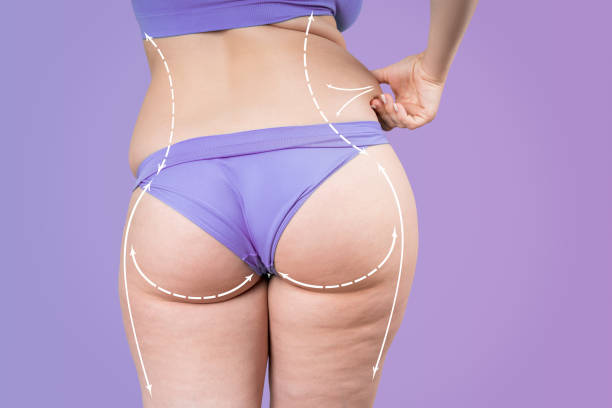An Overview of Liposuction Safety Standards
Liposuction Abu Dhabi has gained immense popularity as a body contouring procedure, especially in regions like Abu Dhabi. As with any surgical intervention, safety is paramount. This article delves into the safety standards surrounding liposuction in Abu Dhabi, exploring regulations, best practices, and the importance of choosing qualified professionals.
1. Understanding Liposuction
Liposuction is a cosmetic surgical procedure that removes excess fat deposits from specific areas of the body. While it can enhance body shape and improve self-esteem, understanding the procedure and its associated risks is essential.
2. The Importance of Safety Standards
Safety standards in liposuction ensure that patients receive high-quality care and minimize the risk of complications. These standards are put in place by health authorities to protect patients and ensure ethical practices.
3. Regulatory Bodies in Abu Dhabi
In Abu Dhabi, the Department of Health (DOH) is the primary regulatory body overseeing medical practices. The DOH sets guidelines for cosmetic procedures, including liposuction, ensuring that clinics adhere to safety protocols.

4. Accreditation of Medical Facilities
Accreditation is a critical factor in the safety of liposuction procedures. Accredited facilities must meet specific criteria, including equipment quality, cleanliness, and qualified staff. Patients should seek clinics with recognized accreditation for enhanced safety.
5. Qualifications of Surgeons
Surgeons performing liposuction must be board-certified and trained in plastic or cosmetic surgery. This certification indicates that the surgeon has undergone rigorous training and adheres to high standards of practice.
6. Pre-Operative Assessments
Before undergoing liposuction, patients should undergo thorough pre-operative assessments. This includes medical history evaluations, physical examinations, and discussions about the patient’s goals and expectations.
7. Informed Consent Process
The informed consent process is crucial in liposuction. Patients must receive comprehensive information about the procedure, risks, and recovery. This empowers them to make informed decisions about their health.
8. Anesthesia Safety
The type of anesthesia used during liposuction plays a significant role in safety. Whether local or general anesthesia is employed, it is crucial that it is administered by a qualified anesthetist to monitor the patient’s vital signs throughout the procedure.
9. Techniques and Technologies
Advancements in liposuction techniques have contributed to improved safety. Techniques such as tumescent liposuction and laser-assisted liposuction are designed to minimize blood loss and promote quicker recovery.
10. Post-Operative Care and Monitoring
Post-operative care is vital for ensuring patient safety. Patients should be monitored for signs of complications such as infection or excessive bleeding. Clear post-operative instructions should be provided to facilitate recovery.
11. Recognizing Complications
While liposuction is generally safe, complications can arise. Patients should be aware of potential risks, such as seromas, hematomas, or skin irregularities, and should contact their surgeon immediately if they notice any unusual symptoms.
12. The Role of Patient Education
Educating patients about what to expect before, during, and after the procedure is crucial. Well-informed patients are more likely to follow pre- and post-operative instructions, leading to better outcomes.
13. The Impact of Technology on Safety
Modern technology has significantly improved the safety of liposuction. Advanced imaging and surgical tools allow for more precise fat removal, reducing the likelihood of complications and enhancing patient safety.
14. Ethical Considerations in Liposuction
Ethical practices in liposuction ensure that patients are not subjected to unnecessary procedures. Surgeons should prioritize patient safety and well-being over profit, fostering a trusting doctor-patient relationship.
15. Conclusion: Prioritizing Safety in Liposuction
Liposuction can be a transformative procedure, but safety should always be the top priority. By understanding the safety standards and regulations in Abu Dhabi, patients can make informed decisions and seek high-quality care.
FAQs
- What is the average recovery time after liposuction? Recovery time varies, but most patients can return to normal activities within a few weeks, while strenuous exercise may need to be postponed for several weeks.
- Are there any age restrictions for liposuction? Generally, there are no specific age restrictions, but candidates should be in good health and have realistic expectations about the outcomes.
- Can liposuction be performed on multiple areas at once? Yes, liposuction can be performed on multiple areas, but the surgeon will assess the patient’s health and safety before proceeding.
- What should I expect during the initial consultation? During the consultation, the surgeon will review your medical history, discuss your goals, explain the procedure, and outline potential risks.
- How can I ensure my surgeon is qualified? Verify that your surgeon is board-certified in plastic or cosmetic surgery and check their experience and reviews from previous patients.

